The weeds below have emerged from dumped domestic green waste. Our thanks to Wollondilly Council Natural Resources Department for expert advice and information. This page is a “work in progress” and we will add more information as we get more advice from the experts. Please feel free to offer suggestions and corrections! Please watch our video below for an overview of the problem and scroll down for a discussion on each individual weed.
Please do not dump your garden waste in the bush!
If you are considering using the poison Glysphosate (Roundup) on your weeds please read and consider this web page before you do. We recommend mechanical removal of weeds.
Below are the individual weeds which are in the video. If you can help with more information on identification and control methods your input is very welcome.
Cudweed. Common weed of lawns and pastures, particularly in tough conditions. Difficult to control in an environment like ours.
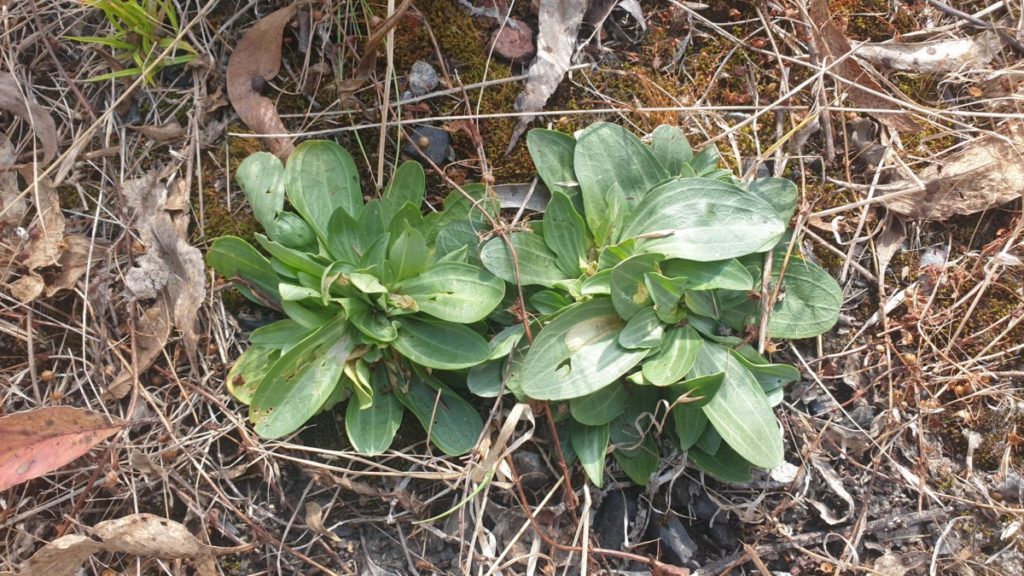
African daisy, osteospermum spp. This is probably the most concerning of the list , it’s a relatively common garden escapee in sandstone areas but it can spread into bushland and form thickets which outcompete native species. More adapted to dry areas than agapanthus. Pulling out can be effective but they often snap off at ground level and regrow. Its resistant to a lot of herbicides. Combination of chipping out and repeated slashing/brushcutting may be best option. Also brush cutting back following petal drop will reduce spread significantly
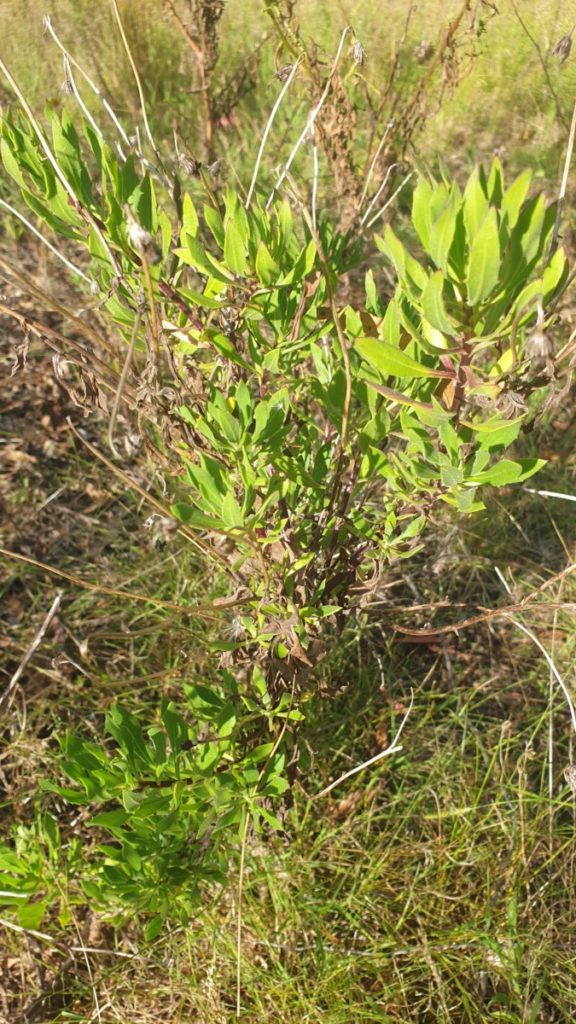
Purple tops or Verbena spp, common nuisance weed. Slashing/brushcutting areas where it grows is probably the easiest maintenance option.
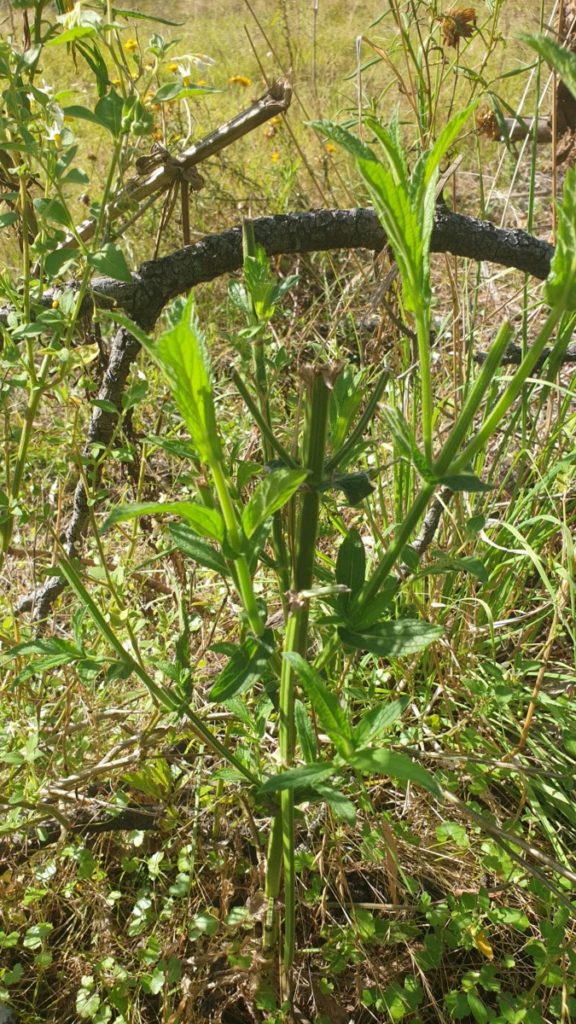
Common nightshade Solanum ptychanthum. Similar situation to verbena. Definitely keep an eye out for others in this family though as there are some serious ones https://weeds.dpi.nsw.gov.au/Weeds/Stickynightshade . Sticky Nightshade is one that has become a problem around Sydney and Wollondilly and we believe this maybe one of the first sightings in the Yerranderie Region.
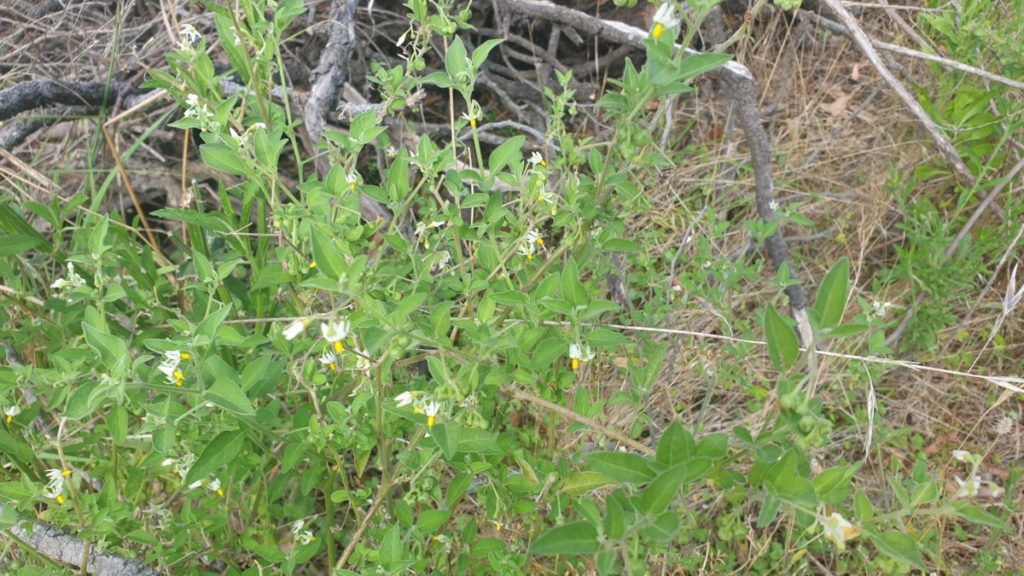
We are concerned that this is Boneseed which looks similar to African daisy when young. Boneseed has much smaller yellow flowers and would be a major problem if it became established in Yerranderie. We don’t want to wait until it flowers to find out and need to be vigilant https://weeds.dpi.nsw.gov.au/Weeds/Boneseed
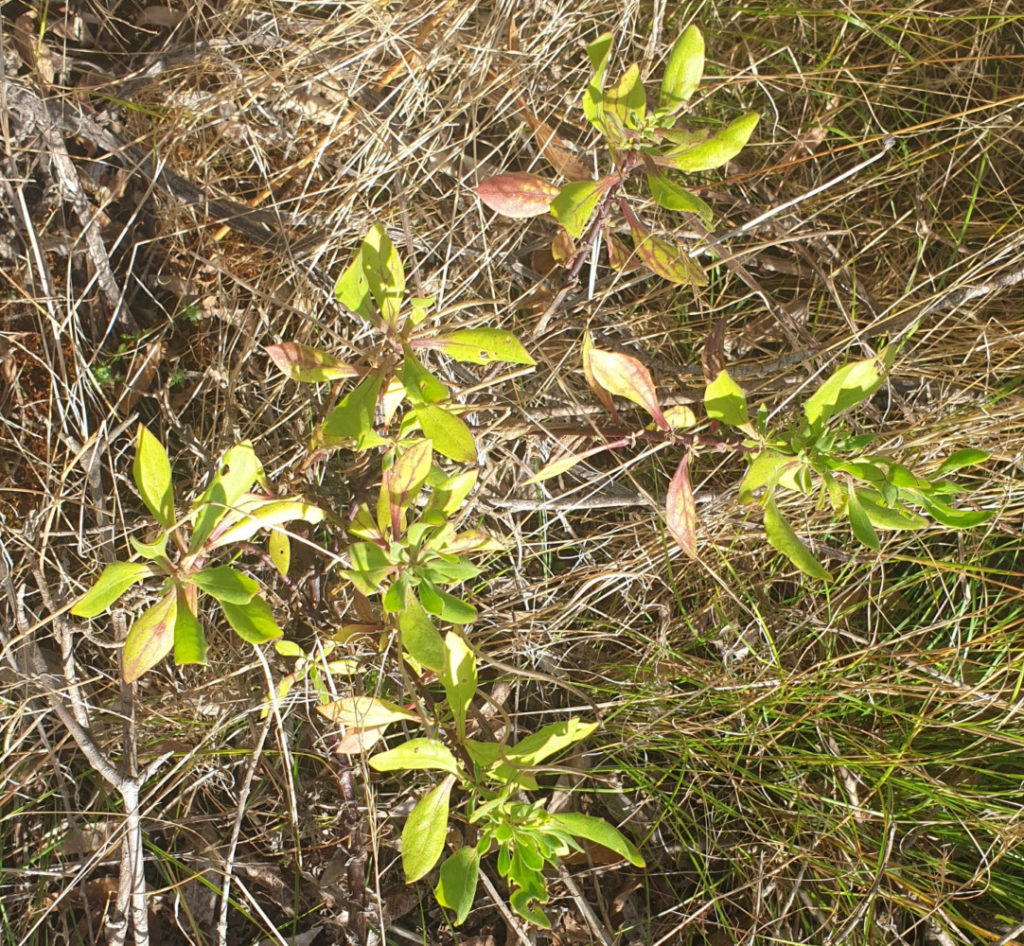
We think this is one called Twiggy Malone. Another nuisance weed of disturbed areas but not likely to cause major environmental damage. Management similar to verbena
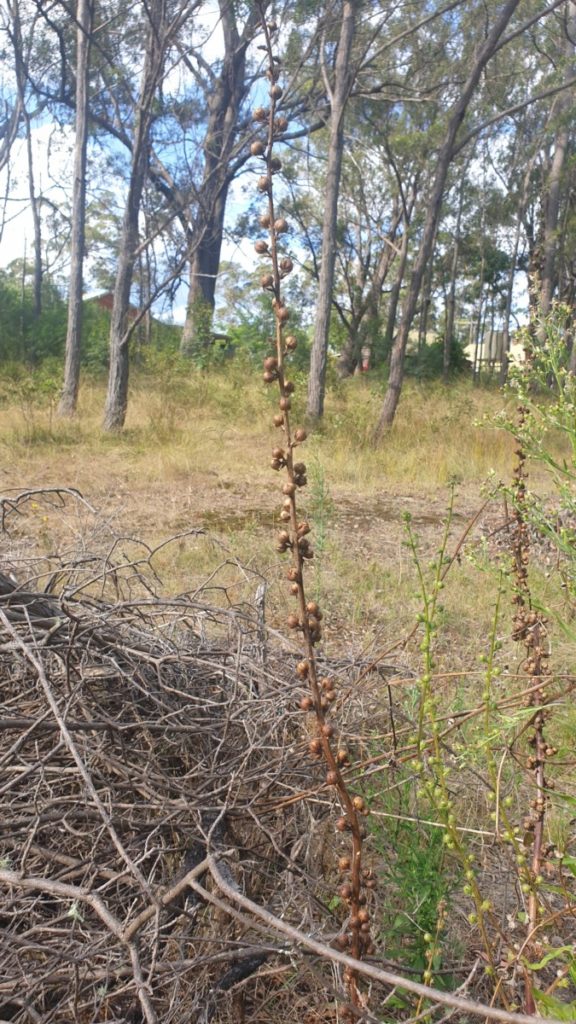
Fleabane – another very common nuisance weed. As with the others slashing a couple of times a year is likely the most efficient treatment as this has other benefits beyond just the weed control aspect.
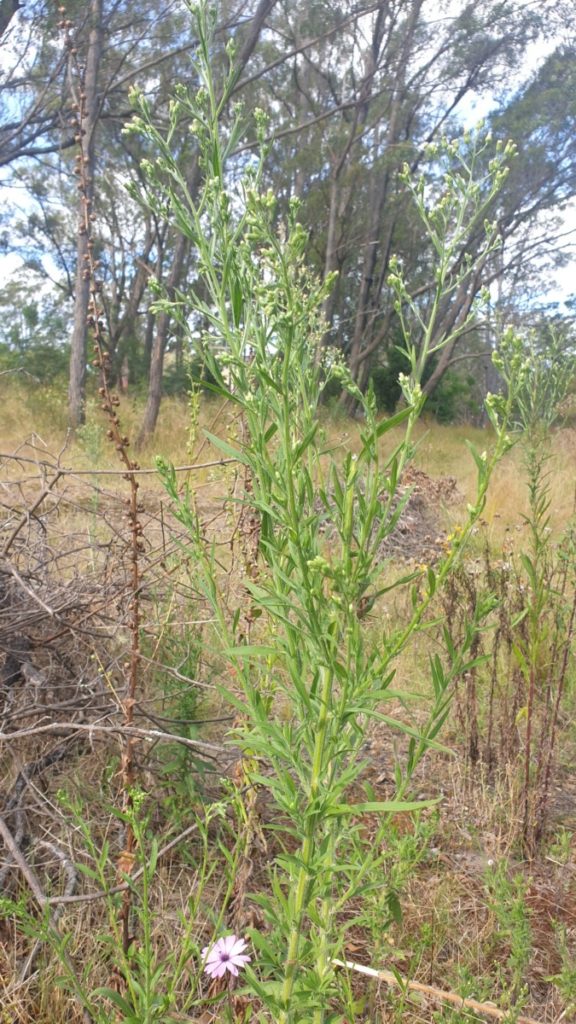
A common nodding thistle. Best control would be to chip out or spot spray with glyphosate when they are young like that. Slashing or chipping out larger plants before they seed is also effective though they may grow back following slashing if not sprayed. Keep an eye out for other thistly types such as saffron and variegated thistle as these could become a major problem
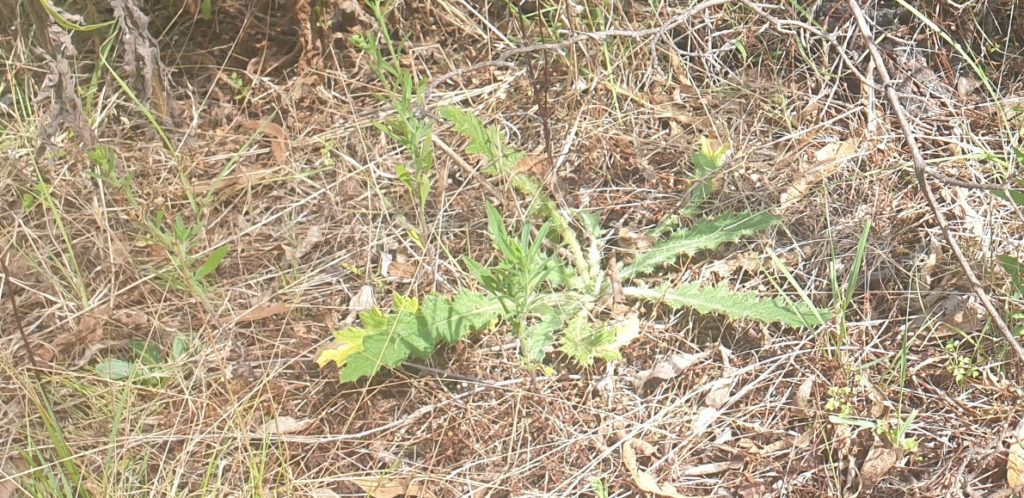
Dandelions. Hand digging is the most time consuming. A broadleaf herbicide will only kill broadleaf weeds, such as dandelions and not surrounding grass. Non-selective herbicide is effective for spot dandelion removal, such as killing dandelions in flower beds and in walkways. When using any herbicide for dandelion control, it will work best to apply the herbicide before the dandelion has developed flowers. Once dandelion flowers have emerged, the dandelion is far more resistant to herbicides and the herbicide, broadleaf or non-selective, will not be as effective.
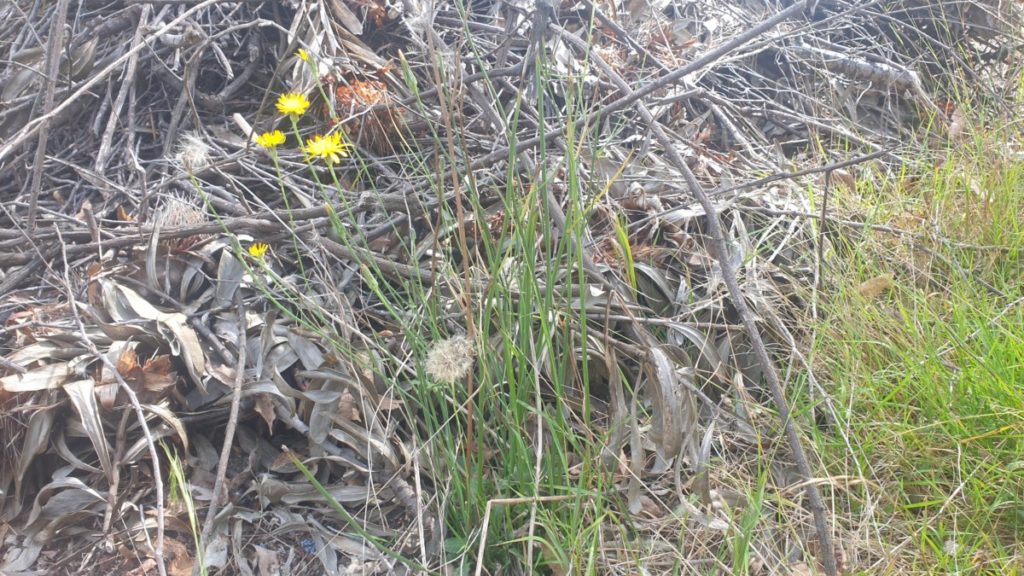
You can see an agapantha and and old rag in the dumped domestic green waste. Baby agapanthus will come up with the wet weather. Chipping them out at this size should be effective but any larger and they can survive out of soil and put down roots. Physical removal of larger plants then burning is an effective but labour intensive option. Tryclopyr based sprays such as garlon and blackberry killers are quite effective. Cutting spent flower heads off the mature plants as soon as the petals drop is a good way to prevent spread. If you do it early they should not have viable seeds but if you get to it a bit late they may need to be burned
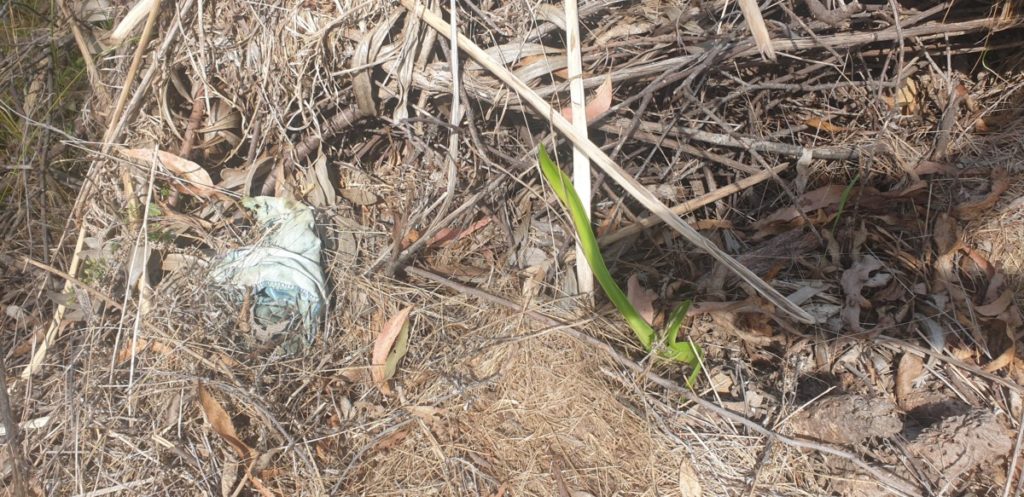
Just downhill of the dumped waste is a low ditch area which has provided a lovely moist place for the Agapantha seeds to wash into and take root.
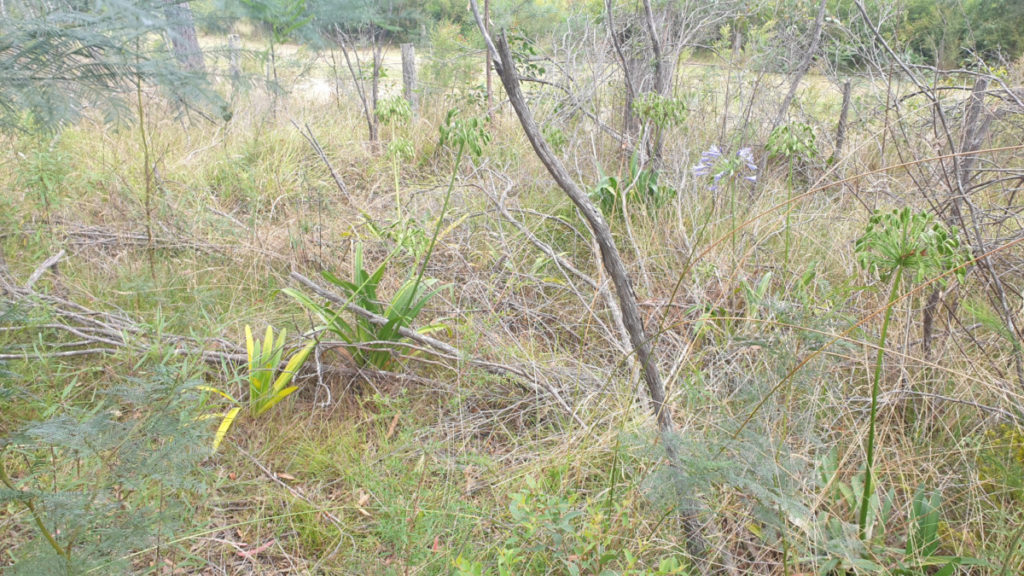
Please be aware of the impact you are having on the environment. Here is a good page with ideas for reducing your pollution.